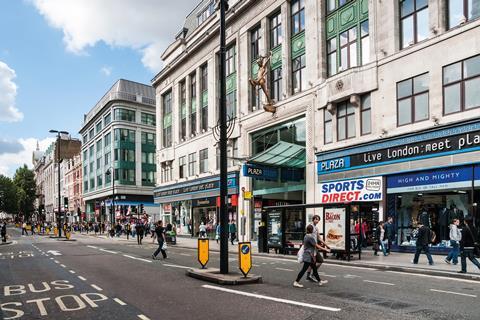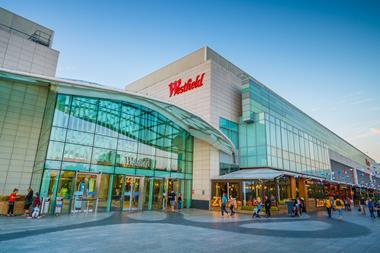Technology has transformed how we function on a day-to-day basis, making our lives easier. Take a look back at your week and you will have most likely taken an Uber to a meeting, bought a coffee with your phone or presented something using your iPad.

We also saw, only last month, restaurant chain Wagamama launch an app that enables customers to simply walk out once they have finished eating, with payment automatically taken from their account. Customers connect directly to a Masterpass digital wallet, without the need to tap a pay button.
With artificial intelligence (AI) and algorithms in the news on a daily basis, are we seeing a shift by the retail and leisure industry towards accepting technological advancements as an everyday necessity? Yes, some argue – especially when it comes to how occupiers are reacting to the accelerating pace of change.
Brands on the high street and in shopping centres are now embracing smart changing rooms, cashless pay points and even, as one high-street bank has announced, robots.
And it doesn’t stop there. With the opportunities presented by online, brands are reacting to greater pressures on physical stores and need to stay relevant to retain custom. Experiential stores were the talk of 2017, boasting in-store cafés, running tracks, beauty bars – you name it. Customer retention is the order of the day.
We have also seen the leisure sector up its game in order to entice shoppers. Like retail occupiers, leisure operators and landlords have realised the need to monetise experiences for greater dwell time and spend. Gone are the days of a mere cinema on the top floor of a shopping centre – we are in the era of trampoline centres, darts clubs and e-sports arenas.
And new ways to understand consumer behaviour are crucial for the modern brand to survive. Until now, this is something that has predominantly affected the retailer.

However, we are now seeing retail investors moving to keep up. In a world where they have historically relied on a calculator and spreadsheets to work out the viability of a deal, we are beginning to see how technology is making life easier. The sophistication of computer algorithms means we are able to identify patterns and find answers from machines that do not require human input or maintenance. While many argue this heralds the start of something great, others will err on the side of caution or seek outperformance from active owners/advisers using technology alongside ‘gut instinct’.
Nowhere is this truer than in the retail investment sector; retail is no homogenised commodity and should be handled with care – especially in an age where the sector is often viewed as volatile. Retail assets are complex and require a level of instinct that computers do not provide. In-depth knowledge, tailored advice and on-the-ground expertise are all key ingredients for a successful asset. However, understanding detailed consumer-friendly habits and shopping patterns can help educate and inform investment decisions.
So, as we think about where technology might take us in the next five years, it is true to say that there is a place for such advancements, especially on an occupier level. But when it comes to the investment sector, we must realise that there is no direct replacement for instinct – nor for that beaten-up, trusty calculator. Technological advancements are not something we can ignore but we need to learn how to best use them alongside instinct and experience to deliver the best results for the industry.





























No comments yet